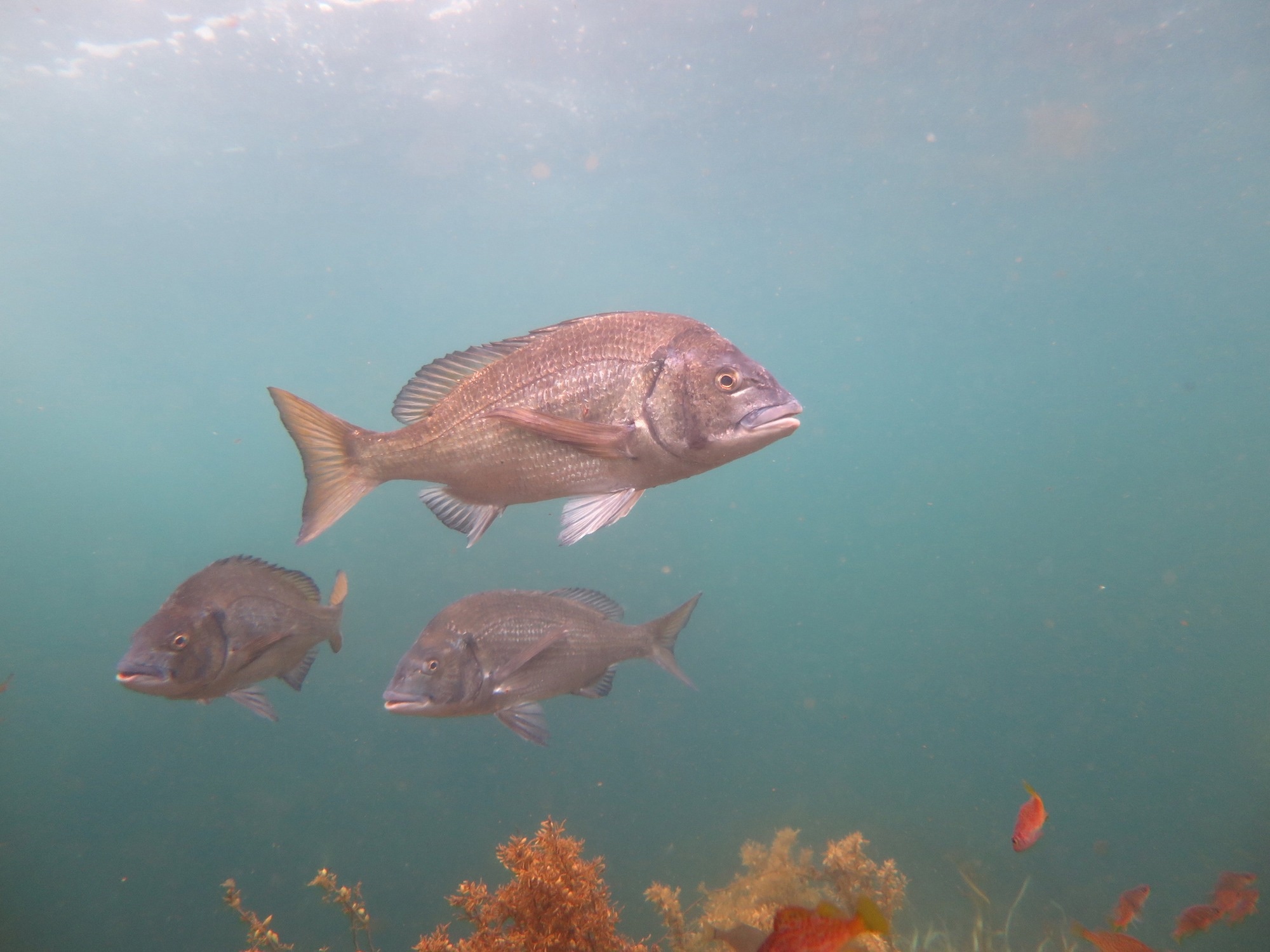A team headed by the Hong Kong University of Science and Technology (HKUST) has devised a technique for studying how different fish species interact with one another in a coastal region, a major discovery that helps describe the complex relationships between marine species and how global warming affects fish populations.

Japanese black seabream, one of the fish species in the study. Image Credit: Reiji Masuda
The group used environmental DNA—known as eDNA—and advanced statistical analysis to identify the presence of fish species and unveil how the species interact with each other by analyzing minute traces of fish DNA from seawater samples.
In recent years, the use of eDNA to assess biodiversity has grown in popularity, especially for identifying aquatic organisms such as fish. Animals shed genetic material as they move through their environment, like skin cells, waste products, and other body fluids.
Researchers can determine the presence and diversity of species with high accuracy by obtaining these traces of DNA from water, soil, or air samples.
However, previous eDNA research has mostly focused on detecting the presence or absence of specific species. It is essential to quantify the number of fish species and detect interspecific interactions, or interactions between species, to gain a better understanding and monitoring of ecosystems.
The group, headed by Prof. Masayuki Ushio, Assistant Professor of the Department of Ocean Science at HKUST, and Dr. Masaki Miya of the Natural History Museum and Institute in Chiba, Japan, created a method to achieve the aforementioned goal by analyzing high-frequency time-series data from fish eDNA, allowing for comprehensive monitoring of species interactions.
Interspecific interactions, like competitive, mutualistic, and prey-predator relationships, have a large influence on ecosystem dynamics. The study lays the groundwork for researchers to make more precise estimations of ecosystem status and future predictions of its dynamics.
For two years, the investigators prepared 11 study sites along the coast of the Boso Peninsula in Chiba Prefecture, Japan, and collected biweekly water samples. They retrieved eDNA from collected samples and analyzed fish communities using a method that produced eDNA-based high-frequency time series of fish communities in coastal ecosystems.
The investigators then used sophisticated time-series analysis methods to identify and quantify the strength of fish-fish interspecific interactions in the communities by analyzing high-frequency eDNA time-series data.
Among their significant discoveries was that water temperature has both positive and negative effects on how different fish species interact with one another. They also discovered that different fish species react in different ways to temperature changes, which sheds light on how global warming may influence the complex relationships between fish species in coastal areas.
The results were published in the international academic journal eLife.
By integrating state-of-the-art techniques from different scientific fields, we showed that eDNA analysis can estimate not only ‘what’ and ‘how many’ species are present, but also ‘who interacts with whom.’
Masayuki Ushio, Assistant Professor, Department of Ocean Science, Hong Kong University of Science and Technology
The framework can be used to research interactions between organisms other than fish. Microbes, crustaceans, and other invertebrates are included. Researchers could use the technique, for instance, to investigate how different organisms interact in aquaculture systems. It could also aid in the identification of potentially harmful pathogens that could affect commercially important fish species.
In the long run, he believes the research will aid researchers and policymakers in better understanding how climate change affects fish populations, including commercially important and rare species.
This information can be used to develop better conservation strategies to protect these species and ensure the long-term sustainability of oceans. For example, to conserve a rare species, it may be important to also protect a fish species that has a significant impact on the rare species.
Masayuki Ushio, Assistant Professor, Department of Ocean Science, Hong Kong University of Science and Technology
The group will soon investigate new technologies, like automated water sampling systems and seawater sampling with underwater drones, to improve the efficiency and effectiveness of eDNA analyses and to further the knowledge of how organisms interact in nature, including how pathogens affect fish populations.
They also intend to use advanced DNA sequencing technology, like long-read sequencing, to investigate eDNA sequences in greater depth.
By utilizing these new technologies and collaborating with experts from different fields, we can continue to advance our understanding of how climate change impacts marine ecosystems, and develop better ways to protect them.
Masayuki Ushio, Assistant Professor, Department of Ocean Science, Hong Kong University of Science and Technology
Journal Reference
Masayuki, U., et al. (2023). Temperature sensitivity of the interspecific interaction strength of coastal marine fish communities. ELife. doi.org/10.7554/eLife.85795.